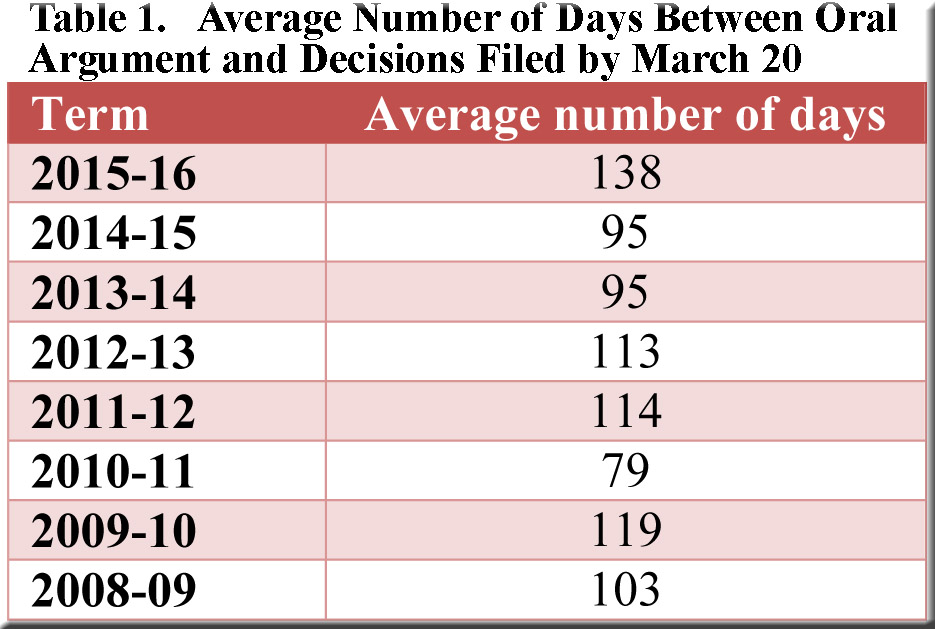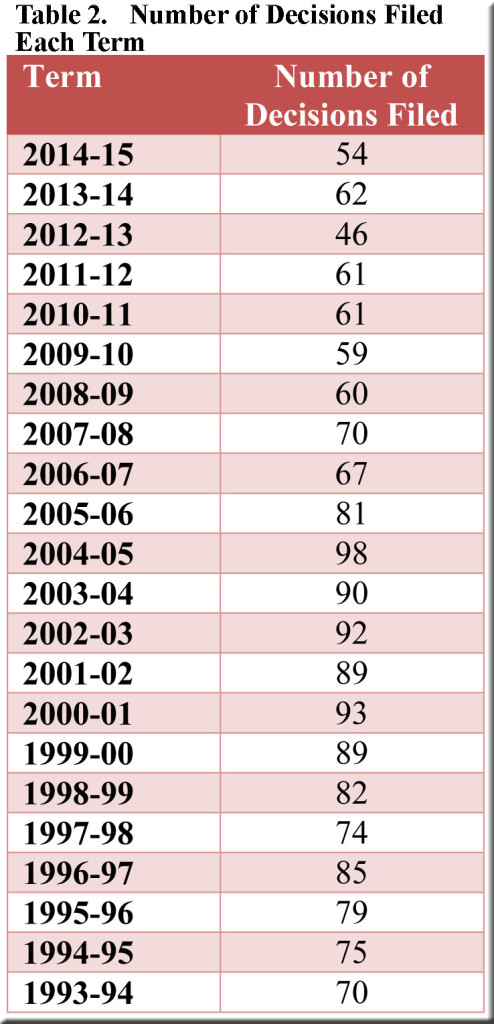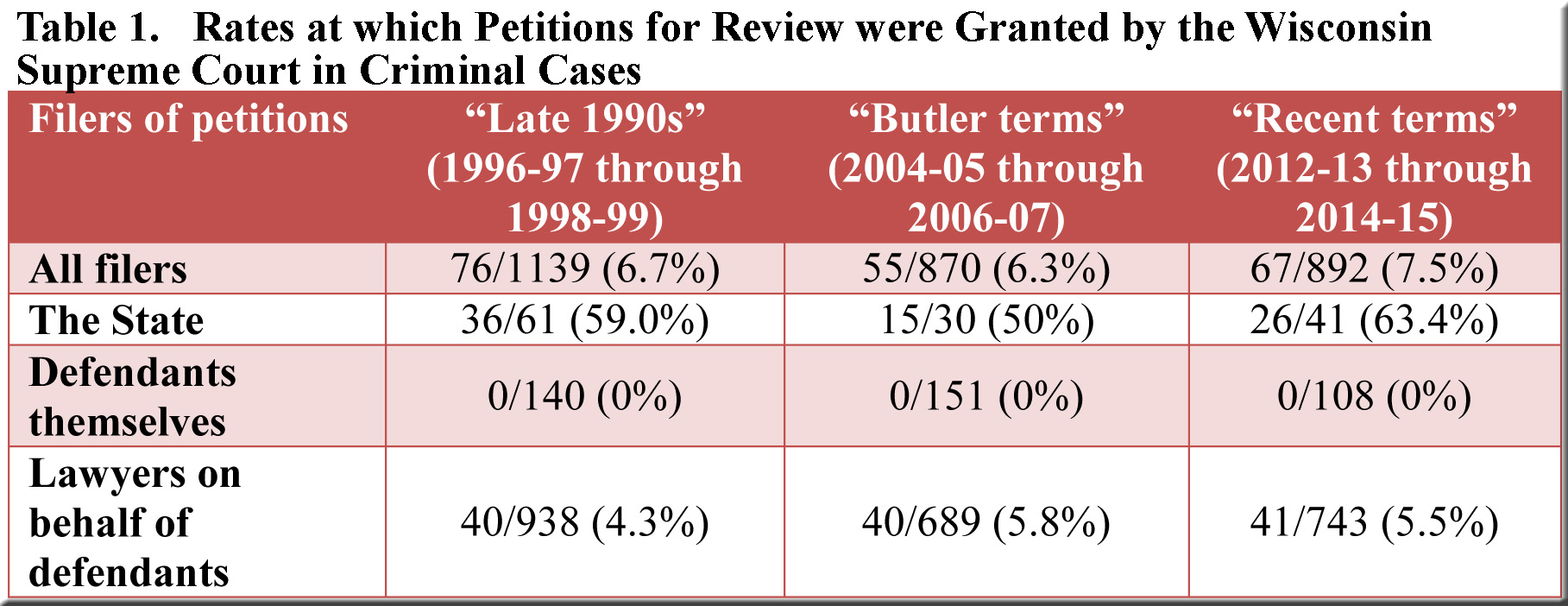Following a recent post’s observation that an unusually large share of cases coming before the supreme court during the current term are per curiam decisions from the court of appeals, a reader wondered if a significantly higher percentage of all court of appeals opinions had been per curiam decisions in 2014-15—which might help explain why the supreme court’s calendar contains a larger proportion of per curiam decisions than in the past. The concern stems from the nature of per curiam opinions, which are unsigned rulings reserved for cases of lesser significance—those not presenting “new or unsettled questions of general importance.” Indeed, they may not even be cited as persuasive authority.[1]
We’ll begin by determining the percentage of all cases decided by the supreme court that had arrived as per curiam decisions from the court of appeals. The results (displayed in Table 1 for the terms currently covered by SCOWstats) indicate that the percentage has been considerably higher in recent years than in the early years of the period—never exceeding 9% in the 1990s and never falling below 15% since 2010-11 (with the figure for 2015-16 predicted to rise as high as 26%). [Continue Reading…]



